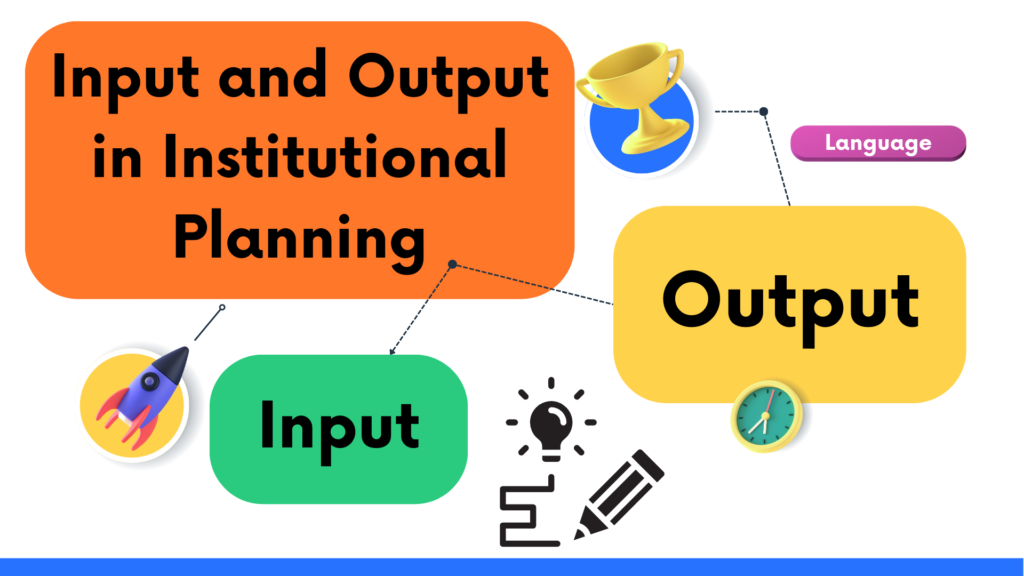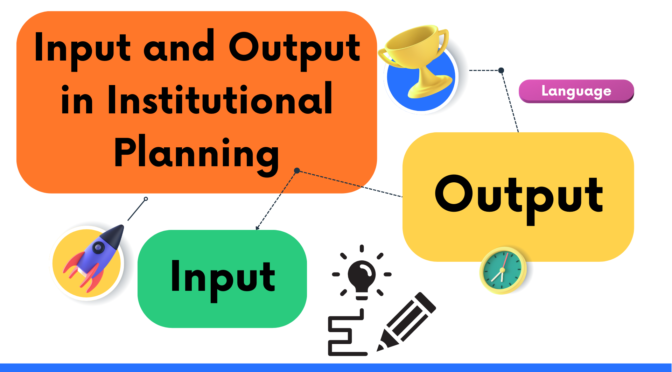Input and output are important concepts in education planning that help to ensure that educational resources are used effectively and that learning outcomes are achieved.
Let’s explore these concepts of input and output in education planning in more detail:
Inputs in Education Planning: Inputs in education planning refer to the resources required to deliver educational programs. These can include human resources, such as teachers and support staff, physical resources, such as classrooms and equipment, and financial resources, such as funding and grants.
Examples of inputs in education planning can include:
- Qualified and experienced teachers
- Well-designed curriculum and instructional materials
- Appropriate facilities, such as classrooms, libraries, and laboratories
- Adequate funding to support educational programs and initiatives
- Technology and equipment, such as computers and audiovisual aids
- Student support services, such as counseling and tutoring
Education planners need to ensure that these inputs are available and appropriately allocated to achieve the desired outcomes. They also need to consider the cost and feasibility of acquiring these inputs, as well as the potential impact on teaching and learning.
Outputs in Education Planning: Outputs in education planning refer to the results or outcomes that are expected from educational programs. These can include student achievement, graduation rates, and employment outcomes.
Examples of outputs in education planning can include:
- Student learning outcomes, such as improved literacy and numeracy skills
- Improved academic performance, such as higher grades and test scores
- Increased enrollment and retention rates
- Improved teacher and staff performance and satisfaction
- Improved parent and community engagement in education
Education planners need to define and measure these outcomes to ensure that educational programs are achieving their goals. They also need to consider the potential impact of external factors, such as socioeconomic status, on the achievement of these outcomes.
The Relationship Between Inputs and Outputs: The relationship between inputs and outputs in education planning is often referred to as the “input-output model.” This model suggests that inputs are transformed into outputs through a series of processes, such as teaching and learning, assessment, and feedback.
Education planners need to ensure that these processes are effective and efficient to achieve the desired outcomes. This may involve monitoring and evaluating the quality of instruction and curriculum, providing professional development opportunities for teachers, and engaging parents and community members in the education process.
Also Read : Yashpal Committees
In summary, inputs and outputs are critical concepts in education planning that help to ensure that educational resources are used effectively and that learning outcomes are achieved. By focusing on both inputs and outputs, education planners can create effective educational programs that meet the needs of students and communities.
Also Visit : Prep with Harshita



21 thoughts on “Input and Output in Education Planning”